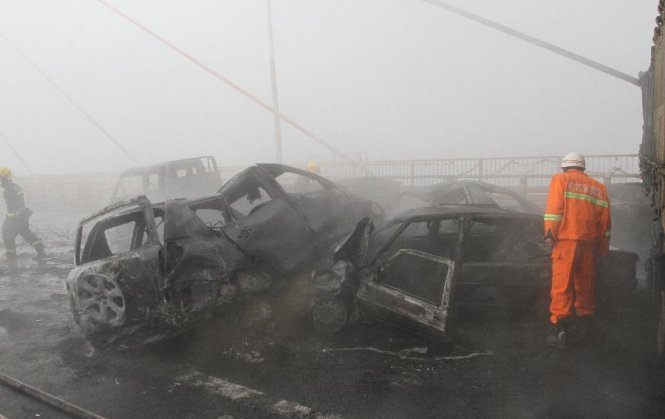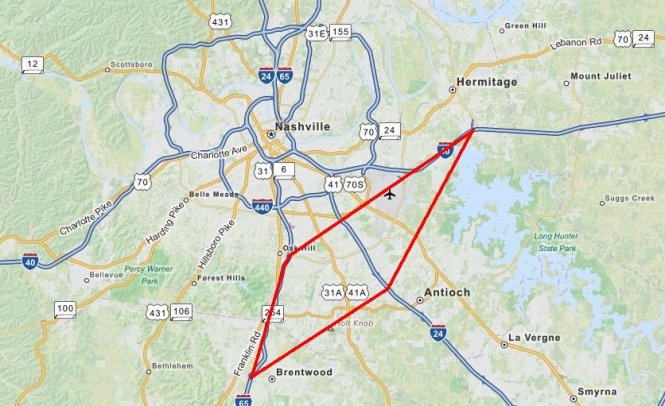Low Visibility Detection Service
Vizzion's traffic camera analytics service utilizes existing DOT infrastructure to create valuable visibility data for both navigation apps and traffic management centers.

Scene of a fog-related nine car pile up which resulted in one death and multiple injuries.
Vizzion's Low Visibility Detection Service proactively scans a global network of over 65,000 live traffic cameras to detect unsafe driving conditions such as fog, smoke, or heavy precipitation. The service outputs georeferenced polygons outlining locations of low visibility for easy integration into traffic management centers and driving-focused apps – allowing drivers to be automatically alerted or re-routed for their safety.

A polygon (in red) produced by Vizzion’s weather analytics showing low visibility southeast of Nashville.
According to the Federal Highway Administration, over 25,000 accidents per year in the US involve fog, resulting in about 400 fatalities annually. In fact, a quarter of all car accidents are weather related, causing avoidable injuries, fatalities, and hundreds of millions of dollars in damage. Currently, fog is difficult to forecast and expensive to detect. Forecasting fog with visibility less than half a mile is only 30% accurate and most forecasting is focused around airports for aviation purposes rather than for drivers. Several state transportation departments (DOT’s) have invested heavily in hardware along roadsides with costs ranging from $100,000 for detection at a single intersection in West Virginia, up to $12 million for 13 miles of roadway coverage by Caltrans near Fresno. These systems typically communicate to drivers by flashing “Fog Ahead” warning lights or Variable Message Signs (VMS) which are statically positioned and may not allow drivers to take the appropriate action in time.

A camera in Norway during clear conditions (left) vs. low visibility conditions detected by Vizzion (right).
About Vizzion
Vizzion is the leading provider of road imagery for traffic, weather, road condition, and safety operations and applications. Through partnerships with over 200 different transport agencies and on-vehicle camera providers, Vizzion offers live feeds from over 100,000 cameras in 30+ countries. Both on-vehicle and roadside traffic camera services are available through Vizzion’s flexible API and turnkey Video Wall application. Vizzion’s content is trusted by major apps, map providers, broadcasters, fleets, and automotive organizations. Contact busdev@vizzion.com for more information.
Articles

Traffic Cameras: Providing the Whole Picture
Governments around the world spend millions of dollars on implementing and maintaining these traffic cameras because they know that the cameras can help mitigate traffic jams and even save lives.

Vizzion Uses Image Analysis to Enhance Data Accuracy and Detect Low-Visibility Conditions
Vizzion's image analysis algorithms create a better end-user experience for its customers by detecting and automatically removing bad images, enhancing impaired images, detecting viewpoints, and other features.

Vizzion Announces New Platform Providing Massive Network of Live On-Vehicle Imagery
Vizzion's new platform will give access to on-vehicle cameras—producing live imagery as they travel.
Applications

Mercedes-Benz leads the automotive technology industry with the release of mbrace2, the first product to enter the market with traffic cameras directly integrated by an auto OEM.

The Pacific Disaster Center, an applied science and research center, is offering traffic camera feeds for disaster mitigation and response through their DisasterAWARE platform.